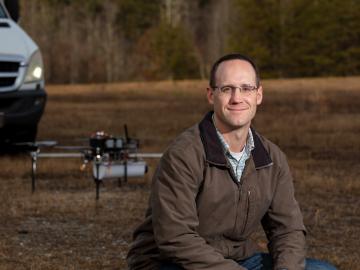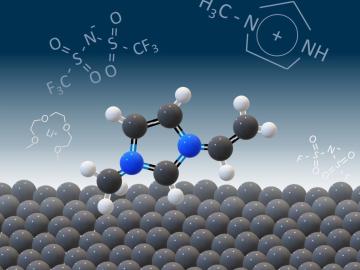
Filter News
Area of Research
- Advanced Manufacturing (2)
- Biological Systems (1)
- Biology and Environment (42)
- Computational Biology (1)
- Computational Engineering (1)
- Computer Science (2)
- Energy Science (41)
- Fusion and Fission (9)
- Isotope Development and Production (1)
- Isotopes (25)
- Materials (86)
- Materials Characterization (1)
- Materials for Computing (10)
- Materials Under Extremes (1)
- National Security (27)
- Neutron Science (34)
- Nuclear Science and Technology (6)
- Quantum information Science (3)
- Sensors and Controls (1)
- Supercomputing (68)
News Type
News Topics
- (-) Biomedical (61)
- (-) Clean Water (19)
- (-) Cybersecurity (31)
- (-) Education (5)
- (-) Frontier (61)
- (-) Isotopes (55)
- (-) Materials Science (120)
- (-) Microscopy (44)
- (-) Security (30)
- (-) Space Exploration (16)
- 3-D Printing/Advanced Manufacturing (108)
- Advanced Reactors (25)
- Artificial Intelligence (114)
- Big Data (58)
- Bioenergy (95)
- Biology (108)
- Biotechnology (36)
- Buildings (50)
- Chemical Sciences (72)
- Composites (24)
- Computer Science (180)
- Coronavirus (37)
- Critical Materials (17)
- Element Discovery (1)
- Emergency (3)
- Energy Storage (80)
- Environment (162)
- Exascale Computing (64)
- Fossil Energy (7)
- Fusion (56)
- Grid (50)
- High-Performance Computing (114)
- Hydropower (6)
- ITER (6)
- Machine Learning (53)
- Materials (113)
- Mathematics (9)
- Mercury (9)
- Microelectronics (4)
- Molten Salt (5)
- Nanotechnology (50)
- National Security (81)
- Neutron Science (139)
- Nuclear Energy (99)
- Partnerships (67)
- Physics (65)
- Polymers (25)
- Quantum Computing (48)
- Quantum Science (80)
- Simulation (54)
- Software (1)
- Statistics (3)
- Summit (62)
- Transportation (61)
Media Contacts

Radioactive isotopes power some of NASA’s best-known spacecraft. But predicting how radiation emitted from these isotopes might affect nearby materials is tricky

Researchers at ORNL used quantum optics to advance state-of-the-art microscopy and illuminate a path to detecting material properties with greater sensitivity than is possible with traditional tools.

A team led by Oak Ridge National Laboratory developed a novel, integrated approach to track energy-transporting ions within an ultra-thin material, which could unlock its energy storage potential leading toward faster charging, longer-lasting devices.

Horizon31, LLC has exclusively licensed a novel communication system that allows users to reliably operate unmanned vehicles such as drones from anywhere in the world using only an internet connection.

Pick your poison. It can be deadly for good reasons such as protecting crops from harmful insects or fighting parasite infection as medicine — or for evil as a weapon for bioterrorism. Or, in extremely diluted amounts, it can be used to enhance beauty.

Real-time measurements captured by researchers at ORNL provide missing insight into chemical separations to recover cobalt, a critical raw material used to make batteries and magnets for modern technologies.

Scientists seeking ways to improve a battery’s ability to hold a charge longer, using advanced materials that are safe, stable and efficient, have determined that the materials themselves are only part of the solution.

After its long journey to Mars beginning this summer, NASA’s Perseverance rover will be powered across the planet’s surface in part by plutonium produced at the Department of Energy’s Oak Ridge National Laboratory.

A team led by Dan Jacobson of Oak Ridge National Laboratory used the Summit supercomputer at ORNL to analyze genes from cells in the lung fluid of nine COVID-19 patients compared with 40 control patients.

From materials science and earth system modeling to quantum information science and cybersecurity, experts in many fields run simulations and conduct experiments to collect the abundance of data necessary for scientific progress.


